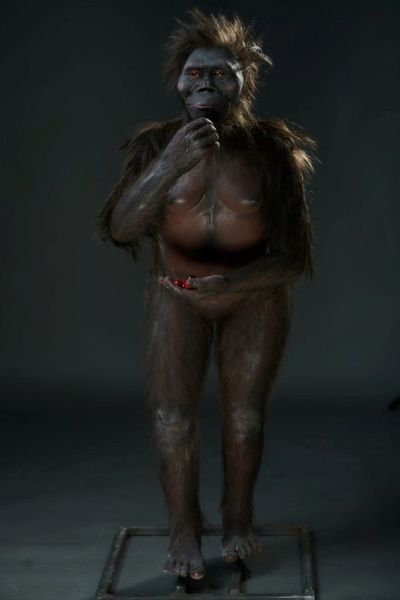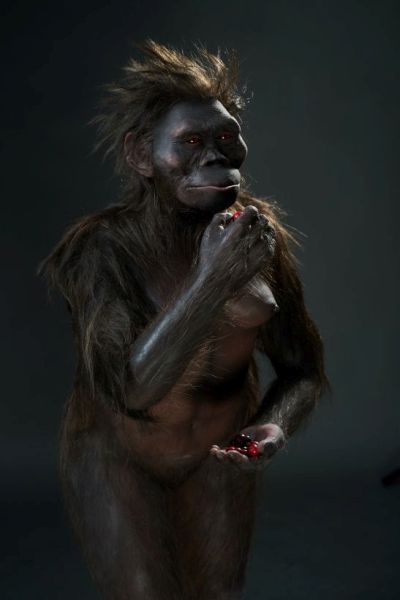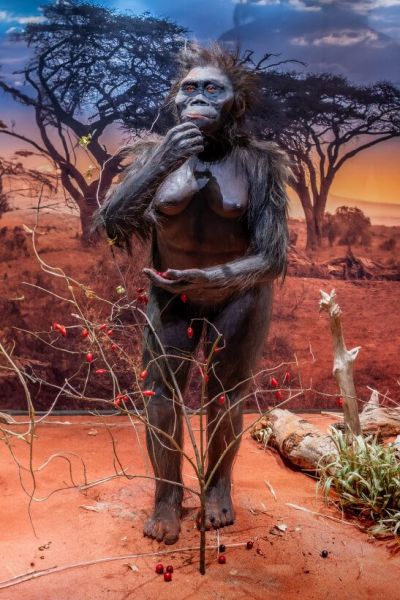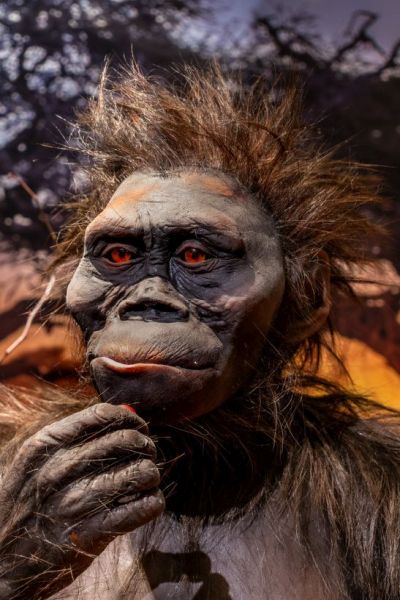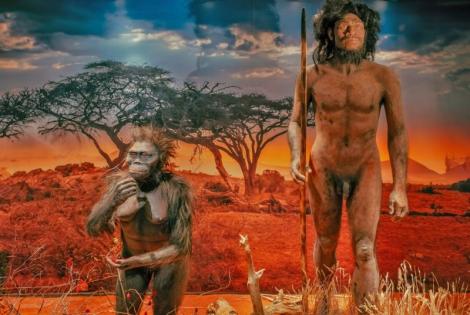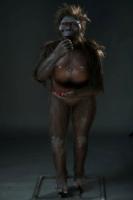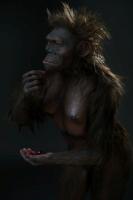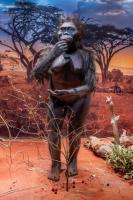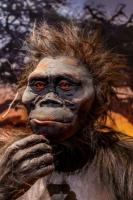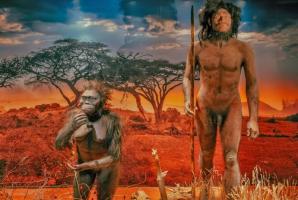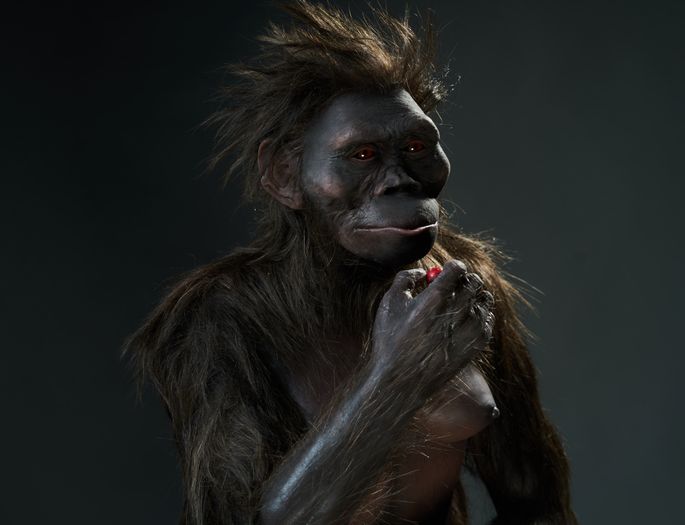
The anthropological exhibition at the Nature Education Centre of the Jagiellonian University now features a new reconstruction of Homo sapiens ancestor. The famous Lucy, which belonged to Australopithecus afarensis species, has thus joined two already existing reconstructions – of a Neanderthal (Homo neanderthalensis) and a Homo erectus.
Australopithecus afarensis, whose name means a southern ape from the Afar region, inhabited East Africa from ca. 3.7 to 1.3 million years ago. The highest number of fossils was found in Ethiopia and Tanzania. The most famous member of the species is Lucy, whose skeleton parts were found in 1974 near Hadar village in Ethiopia. The find is estimated to be about 3.2 million years old and its name comes from the title of the song by the Beatles Lucy in the Sky with Diamonds, which was very popular at that time. The very well-preserved skeleton overturned the pre-existing views on the subject, because 47 bones, described as a 40-percent complete skeleton, allowed scientists to better understand how members of this hominin species moved, what they ate, what environment they inhabited and what social structures they lived in. Based on the surviving bones, it was established that Lucy was only 110 centimetres high and weighed only 28 kilograms, whereas the capacity of her brain was similar to that of today’s chimpanzees.
Lucy’s skeleton was a combination of primitive (ape) and contemporary (human) features. She had short legs, long arms and fingers still adapted to an arboreal lifestyle. Yet, she was able to move in an upright position, on two limbs, and her pelvis did not significantly differ from that of humans. Her arched feet suggest that she walked similarly to human beings. At the moment of her death Lucy was an adult, as indicated by the finished bone growth process and slightly worn molar teeth. Her diet was dominated by plants, fruit and seeds, which means she led a typical life of a gatherer in African savanna habitat. The most probable cause of her death was a fall from a tree, as indicated by characteristic bone fractures. Although it is still uncertain if Lucy was a direct Homo sapiens ancestor, the discovery of her bones significantly broadened our knowledge about the earliest origins of the human species.
Preparing silicone models is extremely time-consuming. At the first stage, it is necessary to thoroughly study the skeleton structure of the reconstructed species, which allows for the construction of a steel framework, thanks to which the model will have a posture typical of a given species. Then layers of modelling clay are put on the skeleton in order to copy the details of muscles as well as skin, with all the wrinkles and folds. Another step consists in making a silicon mould based on the model, which is later used to make a cast. The cast model consists of multiple layers of silicone, whose surface perfectly imitates skin, with all its irregularities and discolorations. Then hair is planted on the naked silicone model. This laborious work is done hair by hair, using a needle and a crochet hook. After some finishing touches and characterisation, the model is finally ready.
The model of Lucy, made by Ewa Stawiarska is presented at the exhibition of the JU Nature Education Centre at ul. Gronostajowa 5 in Kraków in the section devoted to human evolution, together with a Neandertal and a Homo erectus. Besides the human ancestor models, the visitors can also see a human family tree, which includes hominid skull replicas.
All three exhibits were made by Kamyk Piotr Menducki company from Ostrowiec Świętokrzyski. Each stage of the reconstruction process was consulted with anthropologists from the JU Nature Education Centre - Dr Małgorzata Kołodziej, Dr Anna Pankowska, and Dr Kamil Mrożek.


